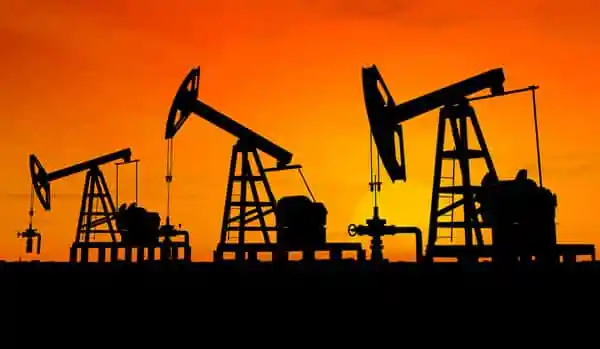The oil and gas sectors play a major role in the energy industry and have an impact on economies around the world. Professionals in the oil industry may need a great deal of experience due to the complexity of oil production and distribution. You may be curious about the various job opportunities in the oil and gas industry if you’re considering a career in this field. In this article, we’ll define the oil and gas industry, its sub-sectors, and they make profits.
What Is Oil Industry?
The oil and gas industry is a huge global sector that has the potential to provide much more money than other industries. This is due in large part to the fact that oil is vital to the functioning of many different sectors around the world, including those involved in transportation, drilling for oil, and manufacturing. Many of the systems and processes used in gas and oil production are intricate, and as such can only be manufactured using cutting-edge, modern technology.
As of 2022, the oil and gas industry is projected to generate $5 trillion in worldwide revenue, making it one of the world’s largest industries by value.
However, oil plays a pivotal role in the global economic system, influencing sectors as diverse as transportation, heating, electricity generation, and manufacturing.
For new investors, the oil and gas industry’s complex terminologies and one-of-a-kind measures can be an immediate barrier to entry. As an introduction to the oil and gas industry, this primer aims to demystify the nitty-gritty by breaking down important ideas and providing a framework for measuring performance.
What Are the Three Sectors of the Oil and Gas Industry?
There are three primary divisions that make up the oil and gas industry: the upstream, the midstream, and the downstream divisions.
#1. Upstream
Oil and gas exploration and production companies make up the upstream sector. These businesses travel the globe in quest of raw material reserves, and once located, they use drilling techniques to obtain the coveted resource. E&P stands for “exploration and production,” which is what these businesses do.
As it takes time to identify and drill for oil, the upstream process is technologically intensive and fraught with danger, requiring large sums of money in upfront investments. The majority of E&P firms’ cash flow and income statement items are intrinsically linked to the production of oil and gas.
Oil and gas exploration firms often neither own nor staff their own drilling rigs. Instead, E&P firms rely on the services of contract drilling companies, which often base their fees on the number of hours they spend performing services for a client.
Unlike E&P businesses, drillers do not benefit financially from their operations’ direct contribution to oil and gas output. After a well has been drilled, it takes a lot of work to get it producing and keep it producing. Well, servicing encompasses a broad range of operations, from logging to cementing to casing to perforating to fracturing to maintenance. Thus, the oil drilling and oil maintenance sectors of the oil and gas industry are distinct commercial endeavors.
#2. Midstream
The second of the three sectors that make up the oil and gas industry is, as was to be expected, the midstream sector. The term “transportation” serves to describe the movement of crude oil or refined petroleum products, which typically takes place by means of a pipeline, oil tanker, barge, truck, or rail. The ultimate location of the shipment is at the refineries, which will then start the process further downstream.
In addition, the warehousing of these products and any and all efforts made to offer them wholesale are included in the midstream industry. Because of its position in the middle, the midstream industry can include components from both the upstream and the downstream sectors. This may include the use of purification plants that raw natural gas must go through in order to reach the refinery.
#3. Downstream
The downstream industry includes all activities that occur after crude oil and natural gas have been extracted, including refining, processing, and purification. Marketing and distribution of crude oil and natural gas products are also included in this industry. Among the many petrochemicals that fall under this category are the more obvious ones like gasoline and diesel as well as the more obscure ones like asphalt and waxes.
This is a crucial aspect of the oil and gas industry, where the gathered stuff is actively converted into tangible currency. Hydrodesulfurization, the process of transforming sulfur-containing molecules in crude oil into hydrogen sulfide gas, is also a part of the downstream market. Raw natural gas is sent through natural gas processing plants to have hydrogen sulfide and sulfur-containing mercaptans removed. The byproduct of this process is hydrogen sulfide, which is further refined into elemental sulfur. Also, read PIPELINE MANAGEMENT: What It Is, Stages, Benefits & Best Practices
There are three distinct phases in petroleum extraction, yet they are all necessary. When combined, they form a fossil fuel so precious that it is used to provide the energy for modern civilization.
Jobs in the Gas and Oil Industry
Jobs in the oil and gas industry are listed below.
#1. Well Testing Operator
Salary: $25,788 annually on average in the United States
The majority of a well testing operator’s time is spent on tasks related to drilling and well site setup, as well as reporting and flow back processes. They contribute to the oil drilling project’s security and quality assurance systems. Other responsibilities may include assisting with rig setup, performing well-testing operations, and overseeing the work of others.
#2. Terminal Operator
The median annual wage in the United States is $43,895.
Primary responsibilities include keeping tabs on how oil rigs and other drilling sites function on a daily basis. They inspect the pipelines, truck racks, and docks where refined products and crude oil are stored and transported. Depending on the company, you may also be responsible for monitoring the flow of products into and out of storage tanks, as well as doing routine maintenance on tanks and pumps.
#3. Offshore Technician
Salary: $47,784 annually on average in the United States
Offshore technicians mostly work in the oil and gas business and are responsible for the installation, evaluation, and maintenance of offshore equipment used in drilling. These experts, who may also be called “process operation technicians,” are employed in fields as diverse as mechanical repair and chemical processing. Other responsibilities may include conducting routine maintenance on drilling equipment, evaluating potential hazards, and writing technical reports about the work completed.
#4. Oil Field Worker
Salary: $48,817 annually on average in the United States
Manual labor associated with the construction and upkeep of oil rigs is the bread and butter of most oil field worker positions. They might also help move heavy loads, such as tools and machinery. Other responsibilities include providing a risk-free workplace and doing construction chores like checking the integrity of pipelines at a drilling site.
#5. Foreperson
The median annual wage in the United States is $54,349.
Forepeople in the oil and gas industry are primarily responsible for overseeing and managing activities and processes at well sites. They could assist in setting up the extraction tools and conducting routine inspections of the drilling machinery. Water, gas, and oil samples must be collected for testing, and other tasks may include evaluating oil and gas flow and dumping chemicals into drilling tanks.
#6. Oil and Gas Accountant
Salary: $57,710 annually on average in the United States
Primary responsibilities include maintaining accurate records of financial transactions for oil and gas production businesses. They could be useful in assisting businesses with their financial statements and tax filings. Other responsibilities may include handling all bookkeeping needs, assessing various tax computations in the nations and states in which the firm operates, and making financial calculations relating to the oil and gas industry.
#7. Geologist
The median annual wage in the United States is $71,744.
To better comprehend the gas and oil rocks beneath the earth’s surface, geologists in the oil and gas industry mostly work in teams to analyze seismic imaging and study historical drill hole data. To locate these rocks, geologists employ sedimentary techniques and stratigraphy. Other responsibilities may include keeping an eye on the drill, analyzing rock samples gathered as part of the drilling operation, and analyzing location data.
#8. Petroleum Engineer
Salary: $79,273 annually on average in the United States
A petroleum engineer’s primary responsibility is to develop strategies for extracting oil and gas from underground deposits. They might monitor developments in the quest for new gas and oil reserves, collaborate with scientists and engineers to perfect drilling techniques and monitor the safety of workers on the job. In addition to directing the entire drilling process, a driller may also be responsible for preparing reports and presentations for management and stakeholders. Also, read
Benefits of the Oil and Gas Industry
The United States relies heavily on its robust oil and gas industry. Not only does it provide power for our transportation industries, but the thousands of byproducts that result from the extraction of oil and gas are also used in the manufacturing of many of the things that we make use of on a daily basis. The financial contribution that the oil and gas industry produces is another significant benefit that the industry provides. We’re going to examine the most significant advantages brought about by the oil and gas industry.
- State Budget Support. In 2021, donations from the oil and gas industry accounted for around 35 percent of New Mexico’s entire budget, which came to a total of $2.9 billion. These monies contribute to the expansion of the economy, the creation of jobs, the growth and management of infrastructure, and the enrichment of educational opportunities.
- Expanding of the Economy. The oil and gas industry in New Mexico is currently worth $27 billion and continues to grow, which makes a substantial contribution to the economy of the state. It continues to add jobs while also allocating state finances in an appropriate manner to essential institutions such as schools, law enforcement, and emergency response.
- Finances for Education. We are well aware that young people are the future, and that it is imperative for us to invest in their futures. The extraction of oil and gas resulted in a donation of more than $1.4 billion to the state’s public school system. The primary and secondary education sector received approximately $991 million, while the higher education sector received approximately $262 million.
Overview of the Top Best Oil Industry
Shell, the world’s most profitable oil industry that is not owned by a government, reduced its spending and operating costs in response to the virus’s rapid spread. To prepare for the challenges posed by Covid-19, it abandoned the Lake Charles LNG project and liquidated its Appalachian holdings.
Here are some of the best oil industries.
#1. Shell
In the 2020 fiscal year, the corporation still lost $21 billion. Most of this was due to a drop in revenue that nearly halved, to $180bn.
Nonetheless, Shell continued to put money into projects like Nigeria’s LNG processing plant. As oil prices rose again, the firm was able to reduce its debt load and eventually boost its dividend payout. Many of the firm’s Canadian holdings were sold to Crescent Point Energy in 2021 for about $707 million. For onshore extraction in Egypt, it also signed agreements with Cairn Energy and Cheiron Petroleum Corp.
As well as this, Shell maintained its efforts in renewable projects by investing in wind farms in the Netherlands and the United States. In addition to committing to a set of principles for the energy transition with seven other prominent companies, the company also experimented with floating wind and airborne wind projects.
#2. ExxonMobil
ExxonMobil made its first quarterly loss since the 1999 merger of Exxon and Mobil. In comparison to the fourth quarter of 2019, the corporation lost $22.4 billion. Its previously discovered reserves lost most of their value, accounting for most of the loss. The company’s wealth has increased since then because of the soaring price of oil.
In response to the financial pressures brought on by Covid-19, ExxonMobil eliminated $10 billion from its capital budget and will reduce operating costs by $7 billion during 2020. As a result, in 2020 there were 450 fewer wells drilled than in 2019. Despite this, annual crude liquids production dropped by only 80,000 barrels per day, whereas gas production dropped by a much more substantial amount.
The upstream division of the corporation will lose $20 billion in 2020, down from 2019’s earnings of $14 billion. About $77 billion in revenue was lost, although forecasts indicate a reversal in 2021.
While developing its leases in Guyana’s seas, the business produced three significant oil finds. A processing and export plant opened in the US, and work continued on other chemical projects.
#3. Chevron
In October 2020, Chevron made headlines when it bought Noble Energy, a US shale oil and gas producer. Higher production costs meant that the shale business in the United States was struck particularly hard when oil prices dropped. When Noble’s profit margins dropped and its debts remained high, Chevron bought its reserves for $4.2 billion.
Meanwhile, Chevron was concerned about its own bottom line. In the second quarter of 2020, the company’s net loss reached $8.3 billion. The corporation lost $5.5bn over the course of the year, despite essentially maintaining its level of net output.
While other major corporations have either stopped or reduced their dividend payouts for 2020, Chevron has upped theirs by 8%. The corporation began to see a comeback to profitability in 2021, though it was still below its pre-pandemic levels.
The conversion of idle refineries has also contributed to the company’s increased output of biofuels. The business has also invested in a hydrogen joint venture and announced ambitions to increase its own hydrogen production after joining the Hydrogen Council. Construction on Chevron’s 500MW of renewable power with Algonquin Renewable Energy has also begun.
#4. Gazprom
Gazprom kept working on the highly divisive Nord Stream 2 pipeline throughout the entire year of 2020. When it’s finished in September 2021, the pipeline will carry a tremendous amount of gas from Russia to Germany. Because of this, eastern European countries that rely on Gazprom pipelines for revenue are worried that the company would gain more market share in center Europe.
Kharavskoye field drilling began in June, and in June, construction on an ice-resistant platform for the Astrakhan field commenced.. Talks between Gazprom and OMV over the possible sale of a portion of the Urengoyskoye field continue. Gazprom proposed a gas pipeline from Russia to China via Mongolia in August.
Gazprom has stated that, once the Amur Gas Processing Plant is operational, it will increase its helium output. The plant’s first unit began operations in September 2021, producing 20 MMcm of gas annually.
Sales fell from $29 billion in 2019 to $22 billion in 2020 due to Russia’s OPEC output restrictions. The outcome was a loss of $9.7 billion in net profit, down from a gain of $10 billion.
What Are Other Consequences of Using Oil and Gas?
U.S. oil and gas consumption contributes to global warming and has far-reaching effects. Millions of people have to move every year because of rising sea levels and other climate-related disasters. Diseases are more likely to spread and food security is threatened. The monetary price tag is staggering as well. Deloitte, a consultancy firm, predicted that inaction on climate change would cost the global economy $178 trillion in 2022. More than a third of all current wealth is contained in that amount.
The exploration, production, and distribution of oil also have domestic repercussions. As one example, the industrial sector contributes significantly to air pollution in the country. Oil and gas employees, as well as the approximately seventeen million Americans who live within half a mile of production facilities, have been found to be at increased risk for respiratory illnesses including asthma and cancer, according to studies conducted in a number of different states. Many of these places fall in close proximity to minority or indigenous populations.
Oil Industry Profits
For the better part of the last decade, the profits generated by the oil and gas industry each year have been greater than one trillion United States dollars. The demand for fuel dropped in 2020 due to a pandemic caused by the coronavirus, but oil and gas companies have been able to maintain their high-profit margins. The market value of the US dollar was said to have exceeded $2.5 trillion in 2008, 2011, and 2012.
Bottom Line
As the two most common forms of energy production, oil, and natural gas play pivotal roles in the international economy. Oil and gas production and distribution are extremely complex, expensive endeavors that necessitate cutting-edge technology and extensive use of cash. Due to their comparable upstream production processes, natural gas and oil have historically been linked in the business.
Natural gas was considered a nuisance for much of the industry’s history, and even now, considerable amounts of it are flared in several countries, particularly the United States. Because of shale gas development in the United States and its lower greenhouse gas emissions when combusted compared to oil and coal, natural gas has assumed a more central role in the world’s energy supply
Frequent Asked Question
What are the 4 types of oil?
Class A oils are those that are light and volatile. These oils consist of:
- Highly fluid,
- Frequently transparent
- Capable of spreading fast across solid or water surfaces.
Class B: Oils That Don’t Stick. The oils in this category feel waxy or greasy. Class B oils are more difficult to remove from surfaces than Class A oils, but can be done so with a thorough washing. They are more likely to invade porous materials and persist at high temperatures. A Class C or D residue may be left behind after volatiles evaporate. This category includes oils with a paraffin content between medium and high.
Class C: Heavier, Stickier Oils. In general, Class C oils have these features:
- Thick
- Sticky, or tarry
- Dark brown or black in color.
While the oil has trouble penetrating porous surfaces, water can help get rid of the residue left behind. Class C oils can have a viscosity comparable to water, making them particularly heavy and causing them to sink. Class D oil can become tarry or solid as a result of weathering or the evaporation of volatiles
Group D: Oils That Don’t Flow. All of the following are examples of Class D oils:
- Mildly non-lethal,
- Do not penetrate porous substrates
- Have a dark brown or black hue typically.
Class D oils melt and coat surfaces, making cleanup difficult. This class includes residual, heavy crude, high paraffin, and weathered oils.
Which state in Nigeria was oil first discovered?
State of Bayelsa. This African country is home to a number of important wildlife reserves, such as the Yankari and Kainji national parks. Oloibiri, in the Bayelsa State of Nigeria, was the site of the first commercial oil discovery in 1956.
Similar Articles
- The Impact of Oil Prices on Calgary’s Real Estate Market
- ROI IN MARKETING: What It Means & How to Calculate It
- WHAT IS AN INDUSTRY: Definition, Sectors, Categories, Facts & Investing
- Mechanical Engineer: Job Description and Salary






